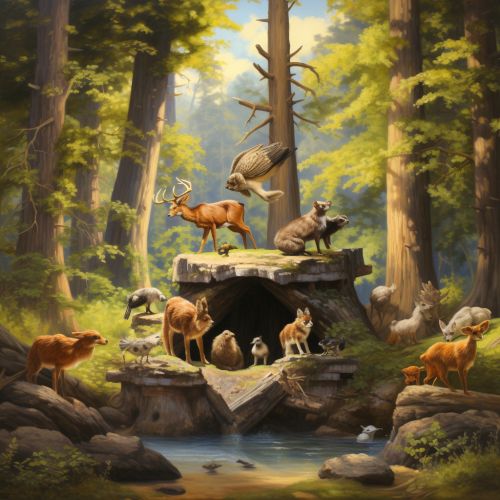The Science of Animal Communication and Cognitive Ecology
Introduction
The science of animal communication and cognitive ecology is a fascinating field of study that explores how animals communicate with each other and how their cognitive abilities influence their interactions with the environment. This field of study is multidisciplinary, drawing from areas such as ethology, psychology, neuroscience, and ecology to understand the complex ways animals perceive, process, and respond to information in their environment.


Animal Communication
Animal communication involves the transmission of a signal from one animal to another in such a way that the sender benefits, on average, from the response of the recipient. This exchange of information is a central theme in the evolution of animal behavior. Animals communicate using signals, which can include visual; auditory; olfactory; tactile cues; and even electrical or chemical signals.
Types of Animal Communication
There are several types of animal communication, including chemical, acoustic, visual, tactile, and electrical communication. Each type of communication has its own unique characteristics and is used by different species in different contexts.
Chemical Communication
Chemical communication involves the use of chemical signals, or pheromones, to communicate. These signals can be used to mark territory, signal aggression, indicate reproductive status, and more. For example, ants leave a chemical trail to food sources that other ants can follow.
Acoustic Communication
Acoustic communication involves the use of sound to communicate. This is common in many species, including birds, frogs, and whales, which use vocalizations to attract mates, defend territory, and maintain social groups.
Visual Communication
Visual communication involves the use of visual signals to communicate. This can include coloration, body posture, and movement. For example, bees use a series of movements known as the "waggle dance" to communicate the location of food sources to other bees.
Tactile Communication
Tactile communication involves the use of touch to communicate. This can include grooming, nuzzling, slapping, and more. For example, primates often use grooming as a form of social bonding.
Electrical Communication
Electrical communication is used by some aquatic animals, like electric fish, which can generate and sense electric fields. These animals use electrical signals to navigate, communicate, and detect prey.
Cognitive Ecology
Cognitive ecology is the study of cognitive processes in relation to ecological and evolutionary variables. It examines how animals' cognitive abilities help them adapt to their environment, and how these abilities have evolved over time. This field of study is particularly concerned with how animals perceive, remember, and respond to information from their environment.
Cognitive Processes in Animals
Animals exhibit a wide range of cognitive processes, including perception, learning, memory, and problem solving. These processes are influenced by a variety of factors, including the animal's physical environment, social interactions, and evolutionary history.
Perception
Perception in animals involves the processing of sensory information to understand the environment. This includes visual, auditory, olfactory, and tactile perception. For example, bats use echolocation, a form of auditory perception, to navigate and find food.
Learning
Learning in animals involves the acquisition of new knowledge or skills through experience. This can include classical conditioning, operant conditioning, and observational learning. For example, many bird species learn their songs through imitation of adult "tutors."
Memory
Memory in animals involves the storage and retrieval of information. This can include short-term memory, long-term memory, and spatial memory. For example, squirrels use spatial memory to relocate their food caches.
Problem Solving
Problem solving in animals involves the use of cognitive processes to overcome obstacles or achieve goals. This can include tool use, planning, and innovation. For example, crows have been observed using tools to obtain food.
Interplay of Animal Communication and Cognitive Ecology
The interplay between animal communication and cognitive ecology is a complex and dynamic process. Communication signals can influence cognitive processes, and vice versa. For example, the complexity of bird songs can influence the cognitive development of young birds, and the cognitive abilities of an animal can influence the types of communication signals it can perceive and interpret.
